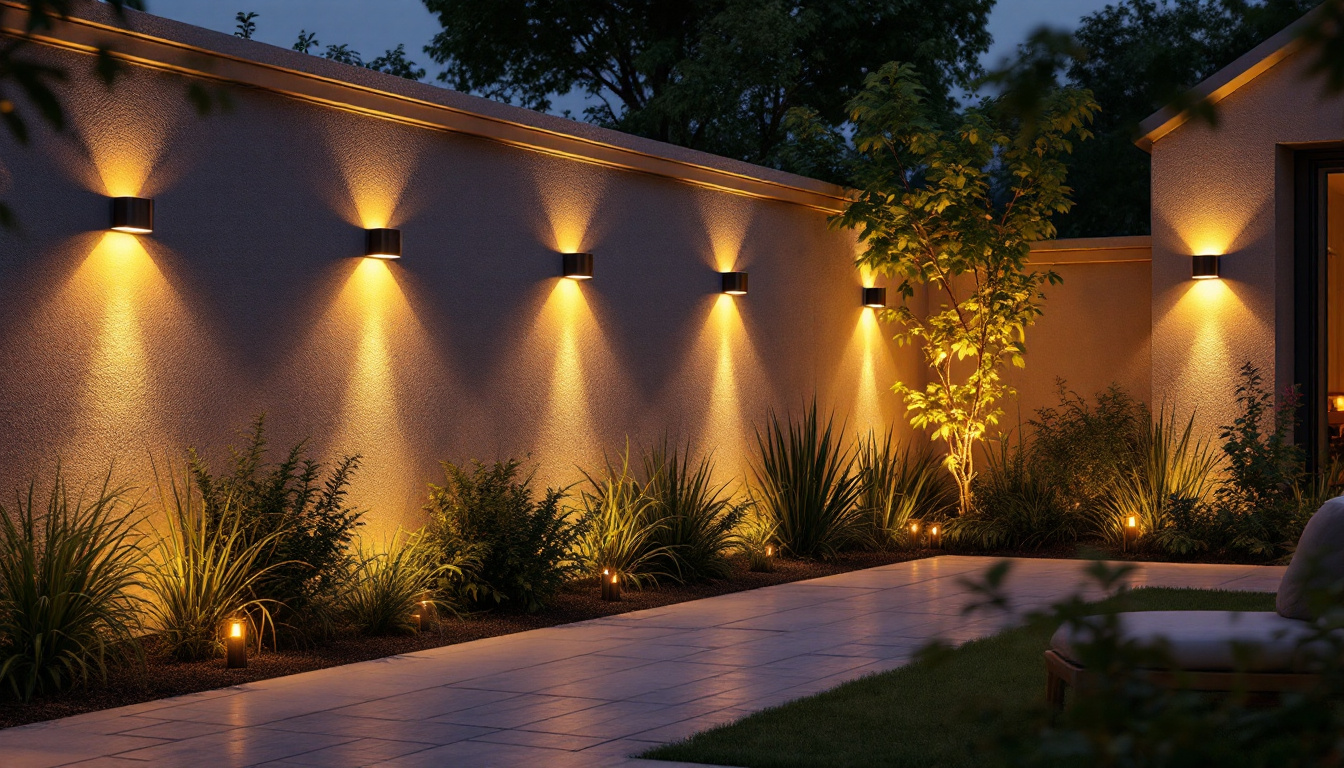
As the demand for energy-efficient lighting solutions continues to rise, 200-watt LED light bulbs have emerged as a popular choice among lighting contractors. These bulbs offer a powerful alternative to traditional incandescent and fluorescent lighting, providing significant energy savings and longer lifespans. This guide aims to assist lighting contractors in selecting the right 200-watt LED light bulbs, ensuring optimal performance and satisfaction for their clients.
200-watt LED light bulbs are designed to replace higher wattage traditional bulbs while delivering comparable brightness. With advancements in LED technology, these bulbs can produce a significant amount of lumens while consuming less energy. This efficiency not only reduces electricity costs but also contributes to a lower carbon footprint, making them an environmentally friendly choice. The shift towards LED technology is part of a broader movement to promote sustainable living, as these bulbs typically contain no hazardous materials, unlike some traditional lighting options.
One of the primary advantages of 200-watt LED light bulbs is their energy efficiency. These bulbs can provide the same brightness as a traditional 400-watt incandescent bulb, using only a fraction of the energy. This efficiency translates into substantial savings on energy bills, making them an attractive option for both residential and commercial applications. Furthermore, many utility companies offer rebates for switching to LED lighting, which can further enhance the financial benefits of this upgrade.
In addition to energy savings, LED bulbs have a longer lifespan compared to traditional lighting options. While incandescent bulbs may last around 1,000 hours, 200-watt LED bulbs can last up to 25,000 hours or more. This longevity reduces the frequency of replacements, minimizing maintenance costs and inconvenience for clients. Additionally, LED bulbs are more durable and resistant to shock and vibration, making them ideal for high-traffic areas or outdoor installations where traditional bulbs might fail more quickly.
200-watt LED light bulbs are versatile and suitable for a wide range of applications. They are commonly used in commercial spaces, such as warehouses, retail stores, and parking lots, where bright, efficient lighting is essential. Additionally, these bulbs can be utilized in residential settings, particularly in areas requiring high illumination, such as garages and outdoor spaces. Their ability to provide instant brightness without warm-up time is particularly beneficial in settings where immediate visibility is critical.
Moreover, their adaptability extends to industrial environments, where robust lighting is crucial for safety and productivity. Lighting contractors can recommend 200-watt LED bulbs for factories, workshops, and other industrial facilities, ensuring that clients receive the appropriate lighting solutions for their specific needs. Beyond industrial applications, these bulbs are also increasingly being integrated into smart lighting systems, allowing users to control brightness and color temperature remotely, enhancing both functionality and energy management in various settings.
When selecting 200-watt LED light bulbs, several factors should be taken into account to ensure the best fit for a project. Understanding the technical specifications and features of these bulbs can greatly impact their performance and suitability for various applications.
Lumens measure the total amount of visible light emitted by a bulb. For lighting contractors, it is crucial to assess the lumen output of 200-watt LED bulbs to ensure they meet the brightness requirements of the intended space. Typically, a 200-watt LED bulb produces between 20,000 to 25,000 lumens, making it suitable for high-ceiling areas or spaces requiring bright illumination.
Contractors should also consider the lighting needs of their clients. For example, a retail space may require brighter lighting to enhance product visibility, while a residential garage may need softer lighting for general use. Understanding the specific lumen requirements of each project will help contractors select the most appropriate bulbs.
Color temperature is another essential factor when choosing LED light bulbs. Measured in Kelvin (K), color temperature affects the ambiance and functionality of a space. Lower Kelvin values (2700K to 3000K) produce a warm, inviting light, ideal for residential settings. In contrast, higher Kelvin values (4000K to 5000K) emit a cooler, more energizing light, suitable for commercial and industrial applications.
Lighting contractors should discuss color temperature preferences with their clients to ensure the selected bulbs create the desired atmosphere. For instance, a restaurant may benefit from warm lighting to create a cozy dining experience, while an office may require cooler lighting for enhanced productivity.
Energy efficiency ratings, such as the Energy Star certification, indicate the performance and efficiency of LED light bulbs. Choosing Energy Star-rated 200-watt LED bulbs ensures that clients receive high-quality products that meet strict energy efficiency guidelines. These ratings not only provide assurance of performance but may also qualify clients for rebates or incentives from utility companies.
Contractors should familiarize themselves with the energy efficiency ratings of different bulb options and communicate the benefits to clients. This knowledge can help clients make informed decisions and maximize their energy savings.
Proper installation is critical to maximizing the performance and longevity of 200-watt LED light bulbs. Lighting contractors must be aware of the installation requirements and best practices to ensure optimal results.
Before purchasing 200-watt LED bulbs, contractors should verify that the fixtures in which the bulbs will be installed are compatible. Not all fixtures are designed to accommodate high-wattage LED bulbs, and using incompatible fixtures can lead to performance issues or safety hazards.
Contractors should also consider the type of fixture, such as recessed, pendant, or surface-mounted, as this can impact the distribution of light and overall effectiveness. Ensuring compatibility between the bulb and fixture is essential for achieving the desired lighting outcome.
Many clients prefer the ability to adjust lighting levels to create different moods or enhance energy efficiency. When selecting 200-watt LED bulbs, contractors should inquire about dimming capabilities. Not all LED bulbs are compatible with dimmer switches, so it is vital to choose bulbs specifically designed for this purpose.
Additionally, contractors should ensure that the dimmer switches being used are compatible with LED technology. Using the wrong type of dimmer can result in flickering or reduced bulb lifespan, leading to client dissatisfaction.
While 200-watt LED light bulbs offer long-term savings through energy efficiency, the initial cost can be a concern for clients. Lighting contractors should be prepared to discuss the cost implications and help clients understand the value of investing in quality LED lighting solutions.
The upfront cost of 200-watt LED bulbs may be higher than traditional lighting options, but the long-term savings can outweigh this initial investment. Contractors should provide clients with a clear breakdown of potential energy savings, maintenance costs, and the expected lifespan of the bulbs.
By illustrating the total cost of ownership, contractors can help clients appreciate the financial benefits of choosing LED lighting. This approach can facilitate informed decision-making and encourage clients to invest in energy-efficient solutions.
Many utility companies offer rebates or incentives for clients who choose energy-efficient lighting solutions. Contractors should stay informed about available programs in their area and communicate these opportunities to clients. By taking advantage of rebates, clients can reduce the overall cost of their lighting projects, making LED bulbs even more appealing.
Contractors can also assist clients in navigating the rebate application process, ensuring they receive the maximum benefits available. This added value can enhance client satisfaction and strengthen the contractor-client relationship.
While 200-watt LED light bulbs are known for their longevity and low maintenance requirements, occasional issues may arise. Lighting contractors should be equipped to address common problems and provide maintenance recommendations to clients.
Some common issues with LED bulbs include flickering, dimming, or complete failure. Flickering can often be attributed to incompatible dimmer switches or voltage fluctuations. Contractors should educate clients on the importance of using compatible dimmers and ensuring stable voltage levels to prevent these issues.
If a bulb fails prematurely, contractors should investigate potential causes, such as overheating or poor installation. Providing clients with guidance on proper usage and installation can help prevent future problems and extend the lifespan of the bulbs.
Although LED bulbs require minimal maintenance, regular checks can help ensure optimal performance. Contractors should recommend periodic inspections of fixtures and bulbs to identify any potential issues before they escalate. Cleaning dust and debris from fixtures can also enhance light output and prolong the life of the bulbs.
By offering ongoing support and maintenance recommendations, contractors can build trust with clients and ensure their lighting systems continue to perform effectively over time.
Choosing the right 200-watt LED light bulbs is crucial for lighting contractors looking to provide their clients with energy-efficient and effective lighting solutions. By understanding the benefits, key factors, installation considerations, and maintenance practices associated with these bulbs, contractors can make informed recommendations that meet the unique needs of each project.
As the demand for sustainable lighting solutions continues to grow, staying informed about the latest advancements in LED technology and energy efficiency will position contractors as trusted experts in the field. By prioritizing quality, compatibility, and client education, lighting contractors can ensure successful outcomes and foster long-lasting relationships with their clients.
Ready to elevate your lighting projects with the best 200-watt LED light bulbs on the market? Look no further than LumenWholesale, where we provide lighting contractors with exceptional, spec-grade lighting products at unbeatable wholesale prices. Say goodbye to local distributor markups and hello to our premium selection that meets the highest industry standards. With LumenWholesale, you’ll enjoy the convenience of bulk buying with free shipping, ensuring you get the superior lighting you need at the best value. Don’t compromise on quality or price. Wholesale Lighting at the Best Value is just a click away. Experience the LumenWholesale difference today!

Discover how Osram Sylvania empowers lighting contractors with innovative solutions through real-world success stories.

Discover essential tips and best practices for lighting contractors working with linear LED lights.

Discover the essential guide for lighting contractors on exterior bollard lights.

Discover the often-overlooked aspects of solar wall lighting that even seasoned lighting contractors miss.